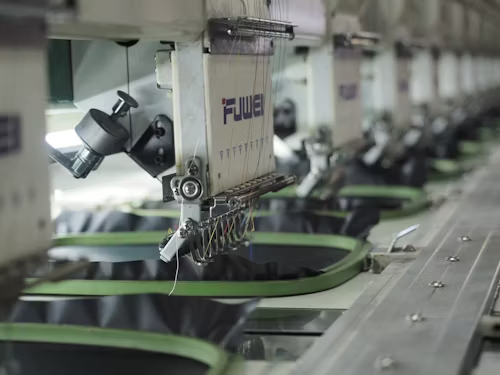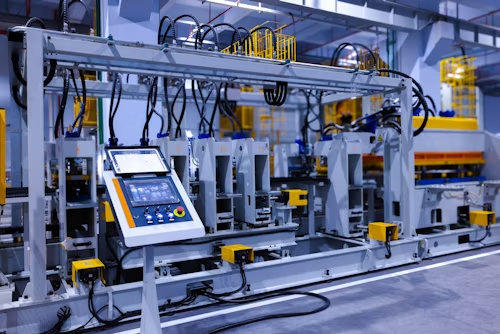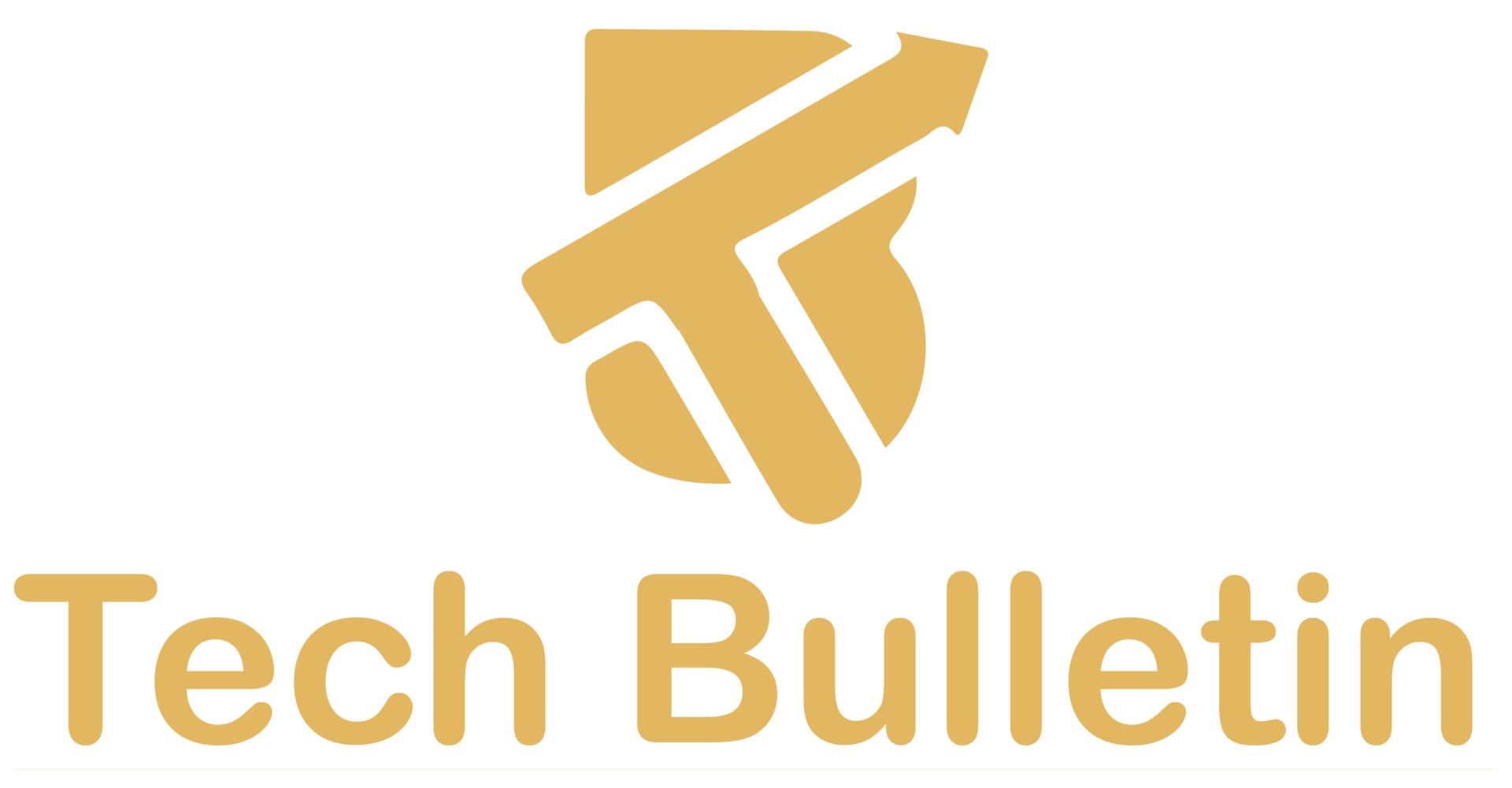How AI Software Is Transforming Modern Manufacturing

If you’ve walked through a factory lately, you may have noticed something new. Machines aren’t just humming along they’re thinking.
They’re predicting when they’ll need maintenance, checking product quality in real time, and helping managers fine-tune production schedules.
This isn’t some futuristic dream. It’s the result of manufacturing AI software, intelligent systems that use data to help factories become more efficient, reliable, and profitable.
But what does that actually mean in practice? How does it work? And is it only for large corporations, or can smaller manufacturers benefit too?
What Is Manufacturing AI Software?
Manufacturing AI software is a type of computer intelligence designed to make factories smarter. It collects and analyzes data from machines, sensors, and production lines, then uses that information to make predictions and suggest improvements.
In other words, it doesn’t just follow instructions; it learns from what’s happening on the floor and helps humans make better decisions.
Think of it like a digital assistant for your factory:
- It watches your machines 24/7.
- It notices patterns that humans might miss.
- It predicts problems before they occur.
- It recommends ways to improve performance.
Traditional automation does what it’s told. AI-powered automation figures out what should be done next.
Why Manufacturers Are Adopting AI
The manufacturing world has always focused on precision and efficiency, but competition, labor shortages, and supply chain disruptions have raised the stakes. AI gives manufacturers an edge by tackling key pain points head-on.
1. Predicting Equipment Failures Before They Happen
AI can track subtle signals like vibration or temperature changes which indicate that a machine is about to fail. Instead of waiting for a breakdown, maintenance teams get early alerts and fix the issue in advance.
2. Improving Product Quality
AI-powered cameras and sensors can inspect products faster and more accurately than human eyes. They catch microscopic defects, improve consistency, and reduce waste.
3. Boosting Efficiency
Analyzing production data, AI can identify bottlenecks, idle machines, or inefficient processes. Managers can then make small tweaks that result in big gains.
4. Managing Inventory and Supply Chains
AI helps forecast demand, optimize stock levels, and plan orders, minimizing overproduction and shortages.
5. Saving Energy and Resources
Energy is a huge cost in manufacturing. AI systems monitor energy use and adjust processes to reduce waste, lower bills, and cut carbon footprints.
How It Works
AI might sound complex, but the process is easier to grasp than you think.
Here’s what happens behind the scenes, step by step:
- Collecting Data: Machines, sensors, and control systems feed the AI software with data, things like speed, temperature, vibration, and output.
- Cleaning and Organizing: The AI filters out bad or irrelevant data so that only clean, accurate information is used for learning.
- Learning from the Past: Studying months or years of data, the system recognizes patterns. For example, it might learn that a certain vibration pattern always comes before a bearing failure.
- Making Predictions: When it spots those same patterns in live data, the AI predicts what will happen next, like warning that a motor might fail soon.
- Taking Action: It can alert human operators, adjust machine settings, or trigger maintenance workflows automatically.
- Learning and Improving: Each cycle makes the AI smarter. It adapts as machines age, products change, and new data flows in.
Examples of AI in Manufacturing
Here are some easy-to-visualize examples of how factories are already putting AI to work:
- Predictive Maintenance: An automotive plant uses AI to monitor robotic arms. It spots irregular motion patterns that indicate early wear and schedules maintenance before the arm breaks down.
- Automated Quality Control: A packaging company uses AI vision software to inspect thousands of boxes per hour. It flags misprints and leaks instantly, cutting waste and saving time.
- Energy Efficiency Management: A plastics manufacturer applies AI to track power usage. The system finds opportunities to reduce energy costs during off-peak hours, saving thousands per month.
- Production Planning: An electronics factory uses AI to manage shift schedules and line assignments. It reduces idle time and ensures each order ships on schedule.
The Big Benefits
When done right, AI delivers measurable, long-term value.
| Benefit | What It Means |
|---|---|
| Reduced Downtime | Predict and prevent equipment failures before they cause costly interruptions. |
| Improved Quality | Detect defects instantly and maintain product consistency. |
| Higher Productivity | Identify inefficiencies and optimize throughput. |
| Lower Operating Costs | Reduce waste, energy usage, and unnecessary maintenance. |
| Better Decision-Making | Turn data into clear, actionable insights. |
The Challenges and How to Overcome Them
AI isn’t plug-and-play. There are hurdles, but each can be managed with the right approach.
1. Data Quality
AI is only as good as the data it learns from. In manufacturing, that data comes from sensors, machines, and production systems, and if it’s incomplete, inaccurate, or inconsistent, the results can be misleading.
For example, a missing sensor reading or a miscalibrated temperature gauge could cause the AI to make the wrong prediction about machine health or product quality. To prevent that, manufacturers should focus on building a strong data foundation.
That means investing in high-quality sensors, ensuring consistent data collection, and setting up proper data governance, including validation checks, backups, and standardized formats. In short, good data isn’t just a technical necessity; it’s the backbone of every successful AI initiative.
2. Integration Complexity
One of the toughest challenges in adopting AI is getting new systems to talk to old ones. Many factories still run on legacy equipment that wasn’t designed with data sharing in mind. Connecting modern AI tools to these older systems can require custom interfaces, middleware, or upgrades that take time and expertise.
The key is choosing technology partners who specialize in industrial system integration, vendors who understand both AI and the manufacturing environment.
Successful integration isn’t just about plugging things in; it’s about ensuring smooth data flow between machines, software, and people. When done right, AI becomes part of the ecosystem; not an add-on that disrupts it.
3. Initial Costs
Implementing AI in manufacturing is an investment, not an expense, but it does require thoughtful budgeting. The upfront costs can include new sensors, cloud infrastructure, edge computing devices, and software licenses, as well as the time and expertise needed to deploy them.
For many manufacturers, this can seem daunting at first. The smartest approach is to start small and scale strategically. Launch a pilot project focused on one process, such as predictive maintenance or quality inspection, measure the results, and calculate the return on investment.
Once you prove the value, often through reduced downtime or improved efficiency, it becomes much easier to justify expanding AI across the operation.
4. Skills and Training
Even the best AI tools are useless if the people using them don’t understand or trust them. Many manufacturing teams are experts in production and maintenance, not in data science or algorithms, and that’s perfectly fine.
What matters is giving them the right training and tools to interpret AI insights confidently. This might include workshops, on-the-job learning, or intuitive dashboards that explain not just what the AI recommends, but why.
When teams feel empowered rather than replaced, adoption rates soar. A culture of curiosity and collaboration ensures that human expertise and artificial intelligence work together, rather than against each other.
5. Model Maintenance
AI isn’t a “set it and forget it” solution; it’s a living system that evolves alongside your factory. Over time, conditions change: machines wear down, new materials are introduced, production schedules shift, and external factors (like temperature or demand) fluctuate.
All of this affects how well your AI models perform. Without regular updates and retraining, predictions can become outdated or inaccurate.
That’s why it’s essential to establish a maintenance routine for your AI, just like you would for your machines. Regular performance reviews, retraining with fresh data, and monitoring for “model drift” help keep your system sharp, reliable, and aligned with real-world conditions.
How to Choose the Right Manufacturing AI Software
If you’re ready to explore AI for your factory, here’s how to approach it strategically:
Step 1: Define Your Goal
Before you start comparing products or scheduling demos, take a step back and clearly define why you want AI in the first place. AI is a powerful tool, but it’s most effective when it’s focused on a specific, measurable problem.
Do you want to reduce unplanned downtime by 20%? Improve product quality and consistency? Lower energy consumption? Each goal may require a different type of AI solution such as predictive maintenance, quality inspection, or process optimization.
Identifying your top priorities first, you’ll save time, avoid distractions, and ensure that every dollar you invest directly supports your business objectives. Remember: successful AI projects start with clarity, not curiosity.
Step 2: Evaluate Your Data
Once your goal is defined, the next step is to check your data readiness. AI thrives on data, and the quality, quantity, and accessibility of that data will directly affect your results.
Do you already have sensors installed on your machines? Are you collecting data continuously? Is it stored in a structured, digital format that can be accessed easily? If your data is scattered across spreadsheets or only available in handwritten logs, your first step might be to upgrade your data infrastructure.
Think of this as laying the foundation for your AI system. Without solid, consistent data streams, even the most advanced AI software won’t deliver accurate insights.
Step 3: Compare Vendors
Choosing the right AI partner is just as important as choosing the right technology. Every vendor has strengths, some specialize in predictive analytics, others in visual inspection or production planning.
When evaluating providers, look beyond the marketing pitch and focus on practical capabilities. Ask whether their software integrates easily with your existing systems, whether it can process data in real time, and whether it includes clear, user-friendly dashboards for your operators.
Request case studies or success stories from similar manufacturing environments to see how their solutions perform in the real world. And don’t forget about data security and compliance, especially if you’re dealing with sensitive intellectual property. The best vendors act as long-term partners, not just technology suppliers.
Step 4: Run a Pilot
AI in manufacturing doesn’t need to start with a massive, factory-wide rollout. In fact, the smartest strategy is to begin small with a pilot project focused on one process, one production line, or even one machine.
For example, you might deploy an AI-based predictive maintenance tool on a critical piece of equipment and measure how much downtime it prevents over a few months. This pilot phase gives you a chance to validate the software’s effectiveness, identify integration issues, and quantify the return on investment.
Once you see tangible results such as improved uptime or reduced waste; you can scale confidently across other areas of your operation.
Step 5: Get Your Team On Board
Technology alone doesn’t create transformation; people do. For AI adoption to succeed, your workforce needs to be part of the process from day one.
Involve operators, technicians, and supervisors early so they can share input, voice concerns, and understand how AI will help them, not replace them.
Encourage open communication and provide hands-on training sessions to build comfort and trust. When employees see that AI is designed to make their jobs easier, by automating routine tasks, improving safety, and giving them better insights; resistance fades quickly.
A collaborative approach ensures a smoother rollout and a stronger culture of innovation across the factory floor.
Step 6: Monitor and Improve
Implementing AI is not a one-time project; it’s an ongoing journey. Once your system is live, you’ll need to monitor its performance and continually fine-tune it as conditions evolve.
Track how accurately the AI predicts failures, identifies defects, or optimizes production. Gather feedback from operators on usability and reliability.
Over time, feed the system with new data so it can retrain itself and adapt to changes in materials, workflows, or equipment. This continuous improvement cycle turns your AI into a dynamic asset; one that keeps learning, growing, and delivering more value year after year.
The Future of Smart Manufacturing

AI is becoming the cornerstone of modern manufacturing. In the near future, factories will self-optimize; adjusting speeds, schedules, and maintenance automatically to meet demand and reduce waste.
But make no mistake: this future isn’t about replacing people. It’s about empowering people to make better decisions, faster. AI doesn’t remove human judgment; it enhances it.







